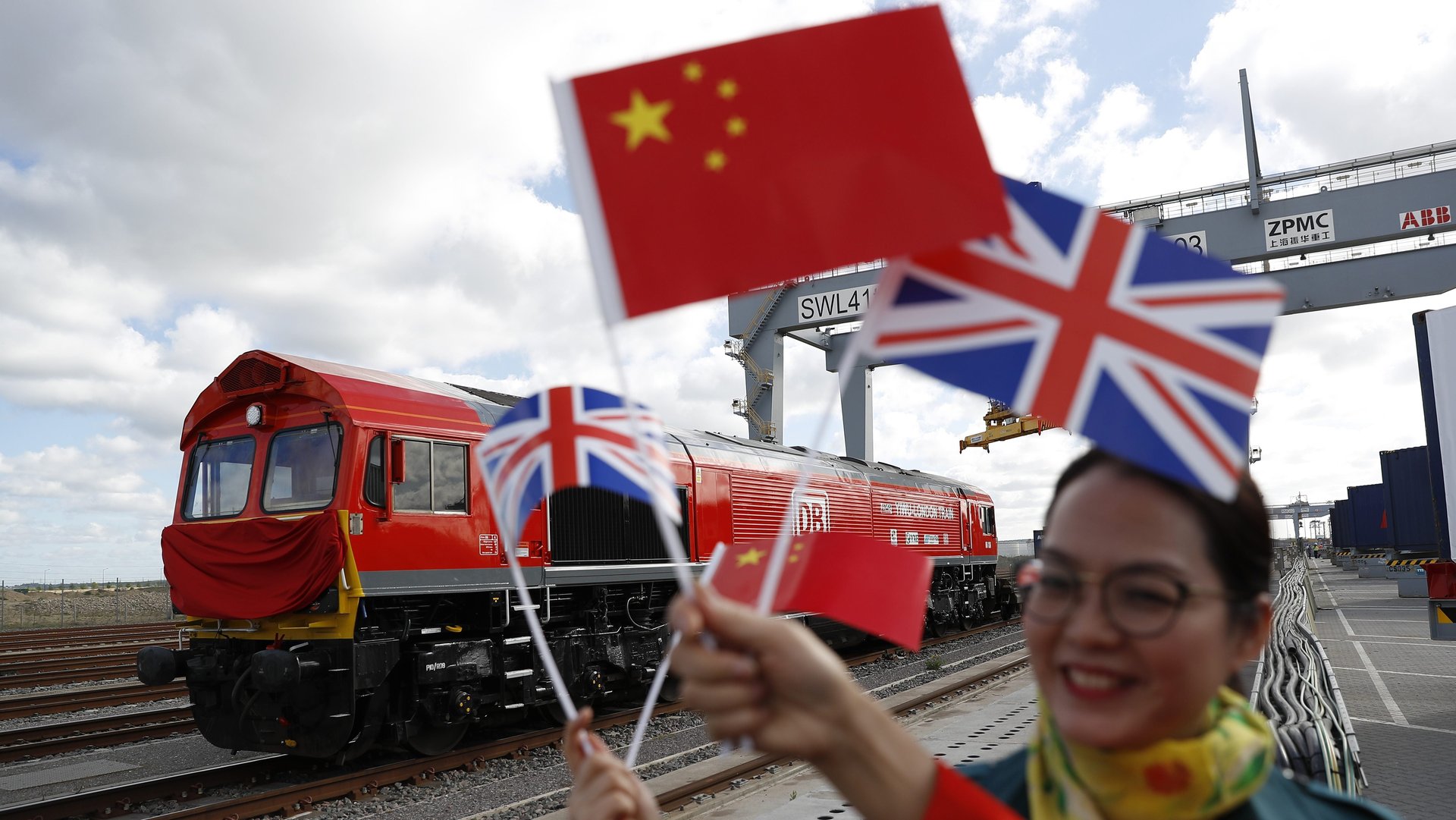China’s investments in the US are setting off a clash of statistics
China’s appetite for investment in the US is leading to fears about looming massive job losses in some quarters and talk of job creation in others—and both sides cite statistics to support their views.


China’s appetite for investment in the US is leading to fears about looming massive job losses in some quarters and talk of job creation in others—and both sides cite statistics to support their views.
This week a report from advisory firm Oxford Economics, commissioned by the fairly new US rail industry lobby group Rail Security Alliance to look at the potential impact of China’s state-owned manufacturers in the US freight car manufacturing sector, estimated as many as 65,000 jobs could be lost. In April, meanwhile, research consultancy Rhodium Group, put out a report that highlighted tens of thousands of jobs associated with Chinese investment in the US.
Here’s a closer look at two different perspectives on Chinese investment in the US.
Jobs will be lost
The Oxford Economics report pegs US freight-car manufacturing at a $5 billion industry. The research firm’s analysis comes in the wake of successful bids from affiliates of state-owned China Railway Rolling Stock Corporation, or CRRC, the world’s largest supplier of rail equipment, for US subway car manufacturing, as well as approval for CRRC’s minority stake in US-based manufacturer Vertex Railcar.
The report estimated that, in the worst-case scenario, for every $1 billion in manufacturing that goes to a Chinese state-affiliated company, there could be 12,860 US jobs are at risk. The jobs hit wouldn’t only be manufacturing ones, the report warns.
Oxford Economics modeled its expected outcomes for the US on Australia’s experience after CRRC entered the market but acknowledges that “the case of Australia is not completely comparable to the US” partly because of Australia’s large natural resources trade with China. From 2008 t0 2016, China’s state-owned railcar makers gradually edged out local companies in Australia. The report attributes the competitiveness of China’s state-owned enterprises in part to their ability to offer lower costs and absorb losses due to government support.
But there are two other things worth noting. Chinese firms are also more competitive at least in part due to lower labor costs.
Secondly, the forecast isn’t based on actual Australian job loss numbers. “The report does not attempt to measure job losses in Australian freight rail rolling stock manufacturing,” says Daniel Martin, senior economist at Oxford Economics in an email to Quartz, because “all rail rolling stock production (passenger, locomotive, freight, some parts, and major rebuild services) are grouped together for statistical purposes” and “using official statistics to retrospectively measure job losses in freight rail rolling stock production is complicated.”
Instead, the worst-case scenario of 65,000 (pdf, p.6) jobs lost assumes that Chinese companies will capture the market and manufacture entirely overseas, and then ship the finished cars back (which it says is the case with Australia). The report noted that unlike passenger car orders from public transit, which come with some local manufacturing requirements, freight orders are mainly in the private sector, which doesn’t have such rules (p.21).
However, if it assumes inputs are shipped in, but assembly happens locally, the report forecasts 5,090 jobs would be lost for each $1 billion of manufacturing.
Jobs are being created
In contrast to the specter of potential job losses, a different recent report focused on local employment created by Chinese-affiliated US companies. At the end of 2016, there were 3,200 Chinese-affiliated companies (p.3), up from 1,900 at the end of 2015, and they had more than 140,000 employees (pdf, p.4), according to an April report co-authored by Rhodium Group and the National Committee on US-China Relations, a non-profit organization that advocates for better bilateral relations. The report gathered employment data from local companies’ regulatory filings (p.57) and found Chinese-operated firms accounted for most of this employment.
Chinese companies added 50,000 US employees to their rolls, the report said. It’s a much more positive picture, but again, there are a couple of other points worth noting from the report.
For the most part, these jobs aren’t new ones. These workers were employed by US companies, that because of acquisitions, became employees of Chinese-affiliated firms. And just a handful of acquisitions accounted for roughly 65% of the increase for 2016, the report said. That makes this chart a better indicator of China’s investments and acquisitions, than its impact on hiring.
When it comes to brand-new jobs that wouldn’t otherwise exist, the achievement is more “modest,” the report acknowledges, in the vicinity of 3,000 or so for 2016. The report adds that several plants are in the pipeline, which should improve the number of new jobs from Chinese-affiliated firms in coming years.
It shouldn’t be surprising if economic researchers have different views on the current and future impact of China’s economy on the US, given that the impact of past economic developments is still being tabulated and debated. The most influential paper related to this so far, from economists David Autor, David Dorn and Gordon Hanson, estimated that Chinese competition, in the form of cheap imports, cost the US 2.4 million jobs between 1999 and 2011. Earlier this year, another economist suggested the findings may be overstated, prompting a sharp and public retort (paywall) from the “China Shock” writers.